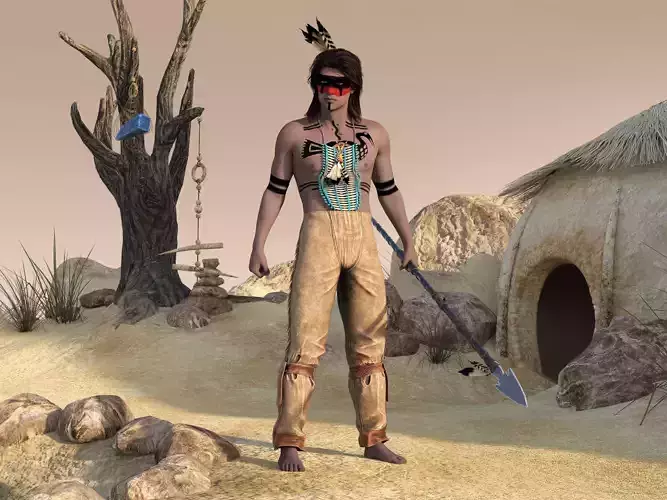1/23
Native American Warrior Rigged
Photorealistic
Low-poly
PBR/Gameready
4K High Quality Texture Maps
POLYGONS - VERTICES
Dae 16384 vertices, 16196 polygons, 170 bones
Body464 vertices, 352 polygons, 61 bones
Pants 13947 vertices, 13758 polygons, 20 bones
Breast Plate 106606 vertices, 113004 polygons, 25 bones
Hair 135851 vertices, 116504 polygons, 19 bones
Hair 4695 vertices, 0 polygons, 16 bones
Rear Feath1675 vertices, 1572 polygons
Spear 269678 vertices, 261276 polygons
Tomawak 168092 vertices, 164488 polygons
A Native American warrior, in traditional contexts, is an individual who has demonstrated courage, skill, and leadership, often through acts of bravery and strategic planning in warfare. Unlike modern notions of warriorhood, where killing the enemy is the primary goal, Native American warriors gained respect and status by counting coup, which involved acts of humiliation or defiance against the enemy, such as stealing their horses or slapping them. They were also expected to be strategic thinkers, capable of leading and planning battles, as seen in figures like Crazy Horse. Here's a more detailed look at the concept: Beyond Combat:While warriors were involved in warfare, their role extended beyond simply killing enemies. They were also healers, leaders, and spiritual figures within their communities.Counting Coup:This practice involved acts of bravery and defiance, such as stealing an enemy's horse or slapping their faces, to demonstrate courage and gain prestige, according to Quora.Strategic Thinking:Native American warriors were expected to be strategic planners and leaders, as seen in battles like the Battle of Little Bighorn, where Crazy Horse led a successful defense against a larger force, according to Quora.Respect and Status:Warriors earned respect and status through their actions and leadership, not necessarily through the number of kills they achieved. Their bravery and strategic thinking were valued highly by their communities.
REVIEWS & COMMENTS
accuracy, and usability.























